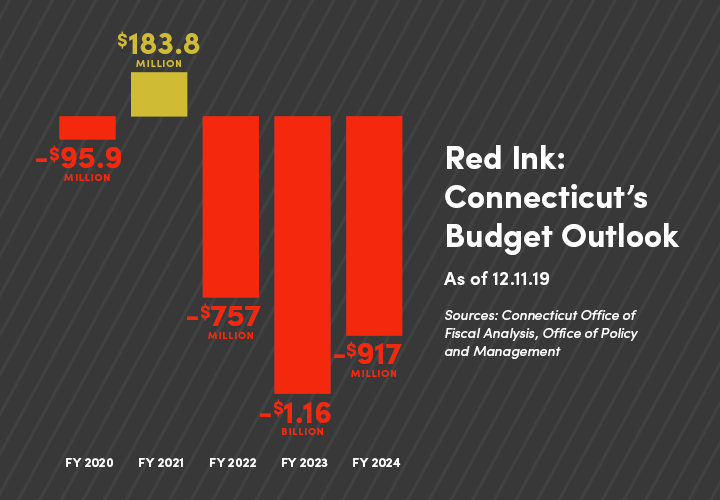Spending, Operational Reforms Will Drive Job, Economic Growth

Connecticut must reform state spending and streamline government to restore fiscal stability and provide a foundation for driving job and economic growth.
That’s the message CBIA shared with the legislature’s Appropriations Committee Feb. 13 as lawmakers reviewed Gov. Ned Lamont’s proposed budget adjustments for the current fiscal year.

Assistant counsel Brian Corvo and economic adviser Pete Gioia told the committee that while Connecticut experienced modest recent economic growth and improved its financial position, job growth remains weak and uncertainty clouds the long-term fiscal picture.
“Connecticut’s legislature can and should take action on such opportunities to make the kinds of foundational changes necessary to improve the state’s fiscal future,” they said in written testimony.
“Connecticut’s legislature can and should promote policies that responsibly and sustainably manage the state’s fiscal operations and encourage private sector job growth and investment.
“Demonstrating a continued commitment to following a fiscally prudent government trajectory will help restore the confidence of Connecticut’s business community in the state and more broadly expand sustainable economic and job opportunities.”
Budget Reforms
The pair noted that state government took a number of positive steps in recent years, including the 2017 bipartisan budget reforms that played a major role in growing the state’s reserves to a relatively healthy $2.5 billion.
Corvo and Gioia told committee members Connecticut has a wealth of assets with the potential for growth across a broad range of sectors.
“That potential, however, can only be realized when business leaders and employers have confidence in the fiscal stability and sustainability of the state government and a comfort in the overall business climate,” they testified.

“When that confidence is improved, investment and job growth follow.
“We encourage the legislature to use the state’s recent modest economic growth as a starting point from which to seize upon further opportunities for enhanced economic stability and growth.
Retirement Wave
Corvo and Gioia testified that the state faces the retirement of a quarter of its workforce over the next two years, with almost 15,000 state employees eligible to retire by 2022.
That wave of retirements, they noted, “presents an opportunity to make the kinds of fundamental changes that will allow Connecticut to take charge of its economic future while improving how the state provides services.”
They presented a series of recommendations designed to leverage that opportunity, including:
- Continue to streamline and modernize bureaucratic and administrative government functions and services by implementing technological solutions
- Expand the use of cost-effective private sector businesses to provide and deliver services
- Expand the use of nonprofit providers to deliver social services
- Continue consolidating operations to achieve greater efficiencies
- Reduce state employee overtime costs
Prisons, Home Care
Gioia noted that state overtime spending is on a $250 million pace this fiscal year, the second highest on record.
As overtime is allowed as a factor in calculating state employee pensions, the failure to control those costs drives up Connecticut’s long-term liabilities.
The pair also recommended a number of initiatives targeted at further controlling corrections and home care costs, including:
- Accelerate prison reform initiatives, especially for nonviolent offenders, to reduce the prison population and recidivism
- Increase effective reentry programs so people reentering the community have more chances for success
- Accelerate the pace of home care in lieu of nursing home placements to meet or exceed the legislature’s target of 75% home care clients
“While much has been accomplished in prison reform and use of home care as an alternative to long-term care, more can be done,” they testified.
“CBIA welcomes discussion on other thoughtful strategies that will result in further savings and efficiencies to further promote a fiscally strong and stable state economy.”
For more information, contact CBIA’s Brian Corvo (860.244.1169).
RELATED
EXPLORE BY CATEGORY
Stay Connected with CBIA News Digests
The latest news and information delivered directly to your inbox.


